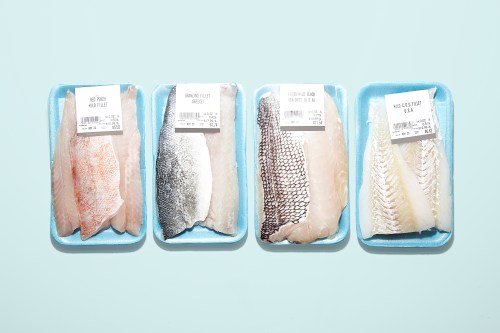The benefits of the buzzy ketogenic diet sound like a total wellness dream—like something you’d conjure up while doing a crystal meditation with your manifestation coach. This low-carb/high-fat way of eating has been shown to reduce inflammation in the body, help with anxiety, jump-start weight loss, and more.
Yet despite all these perks, there’s one little catch that may shuttle you back to reality, fast. See, eating keto causes your body to switch from burning sugar and carbs to burning fats, a phenomenon known as ketosis. While this is the mechanism by which you actually experience all the diet’s benefits, your body needs time to get used to to its new source of fuel. And the adjustment process can often be a challenge, both mentally and physically.
In fact, during the first few days of keto you may feel you’ve succumbed to the so-called “keto flu,” an apt nickname considering how run down, foggy, and sluggish you may feel. Think about it: You’ve likely spent the past 20-30 years of your life eating a carb- and sugar-heavy diet—like most other Americans—so it’s inevitable that your body will throw a tantrum and resist the changes. But there are ways to get to the other side quickly, no shamanic magic required.
Here’s how to get past the keto flu when starting the ketogenic diet—and what to do if your symptoms last longer than a few days.

How to beat the “keto flu”
Jen Fisch, founder of Keto in the City and author of The Easy 5-Ingredient Ketogenic Diet Cookbook, says you can combat those dreaded symptoms by managing your electrolytes, drinking lots of water, and giving your body extra rest.
“Load up on potassium- and magnesium-rich foods, add a little extra salt, and sip bone broth,” says Fisch. And if you like a tough workout, she advises taking it easy during the first week of keto.
But giving your body the time to adjust is worth it, since your undesirable symptoms will probably pass quickly. “The good news is [the keto flu] should only last a few days,” Fisch says. There’s no set amount of time that you can expect to experience the flu—it totally varies from person to person.
So when will things finally click?
Once you’ve gotten past the “flu” stage, your body will continue to adjust before it reaches full ketosis, Fisch explains. Reaching the ketosis state can take a couple of weeks, or even less for some.
“Once that happens, you’ll feel full of energy and have mental clarity, which signifies that your body is now burning its own fat (ketones) instead of sugar,” she says. That’s because your blood sugar remains steady in ketosis, doing away with insulin spikes and crashes. “You’ll start sleeping like a baby at night because your glucose levels are stable,” she adds.
And then there’s the fact that fats are seriously filling. “By continuing to eat about 70 percent of your diet in healthy fats, you’ll feel less hungry,” says Fisch. (This is a major reason why people drop weight on keto.)
To maintain this state, Fisch says you should strive to eat 70 percent fat, 25 percent protein, and 5 percent carbohydrates each day.

Remember to be flexible
And what if you’ve been eating keto for weeks and you’re still feeling sluggish and foggy? As with most things related to the human body, there’s no one-size-fits-all solution when it comes to keto, either. Keep in mind that everyone’s body is different and the diet can be adapted in ways that are best for you, says Fisch.
“Some people on keto avoid dairy, some don’t. Some people eat sweeteners, some don’t. Some people eat convenient, more processed foods and some don’t,” says Fisch. “No two people are the same, so embrace the process of getting to know your body and tweaking as you figure out what makes you feel the best and helps you reach your health goals.” After all, you want your relationship with food to be a balanced one—and that requires a little trial and error. (And, in this case, lots of avocados.)
Originally published February 1, 2018; updated May 30, 2018.
Still curious about that keto life? Read our beginner’s guide, and get the lowdown on what some are calling the ultimate keto diet hack.
Sign Up for Our Daily Newsletter
Get all the latest in wellness, trends, food, fitness, beauty, and more delivered right to your inbox.
Got it, you've been added to our email list.











